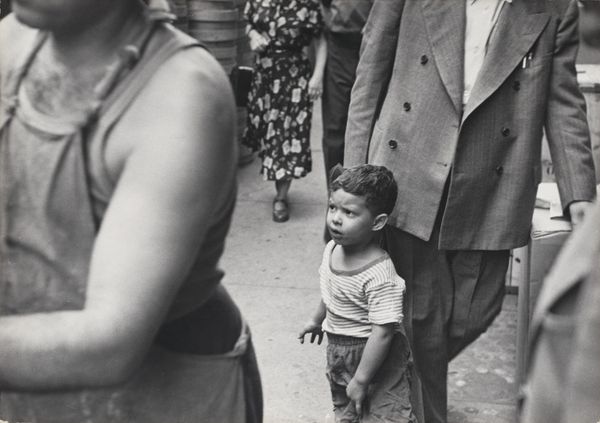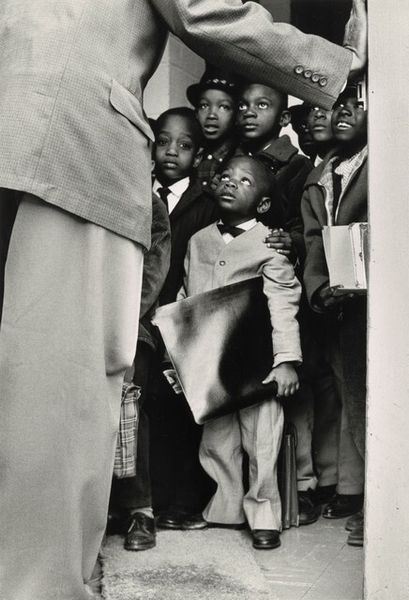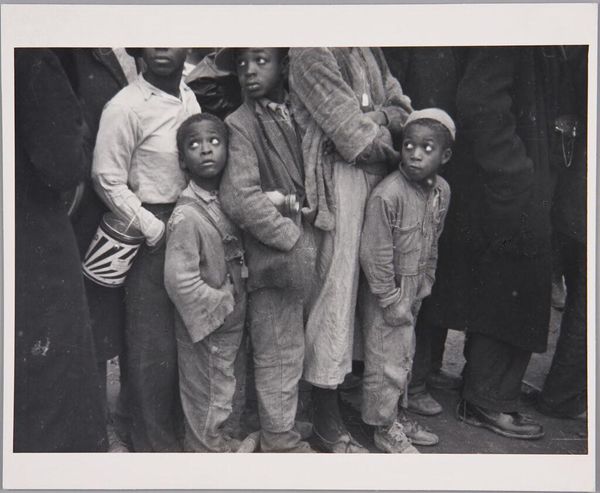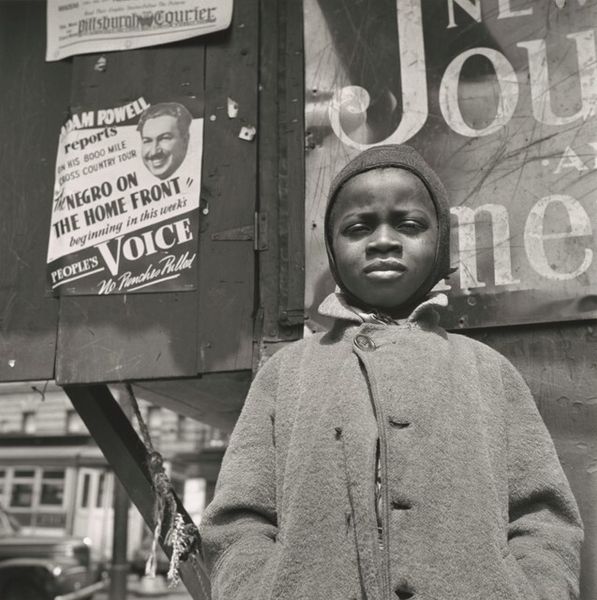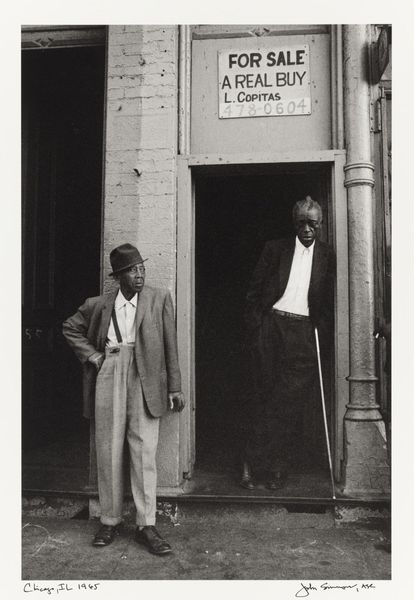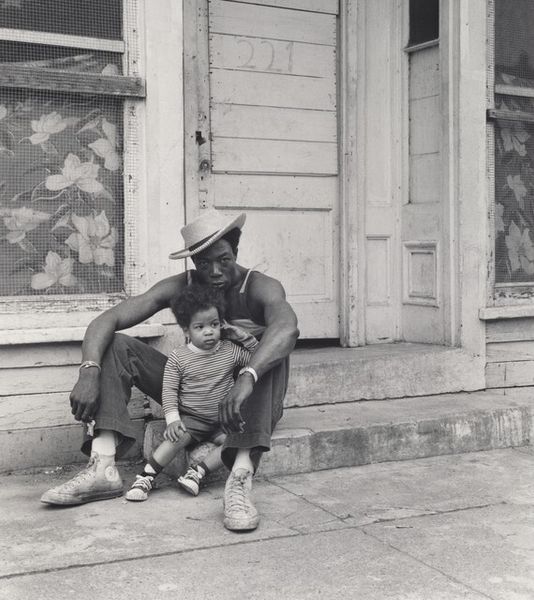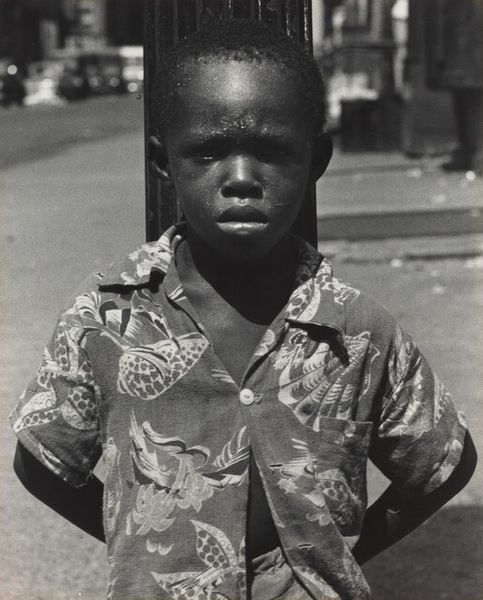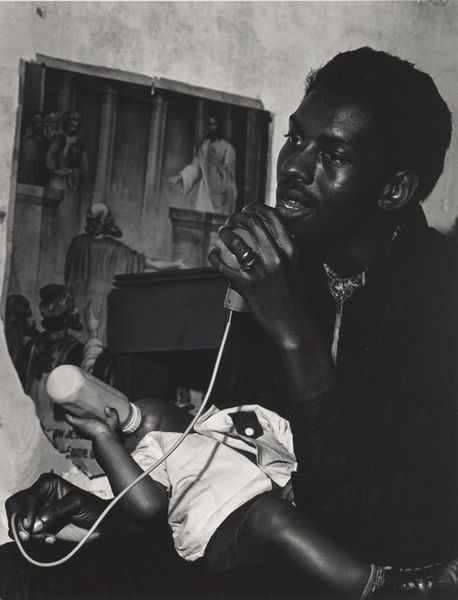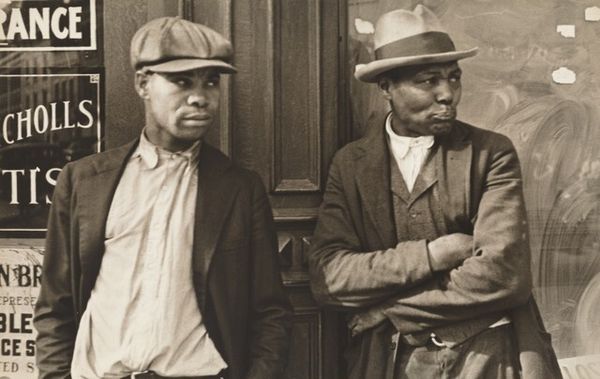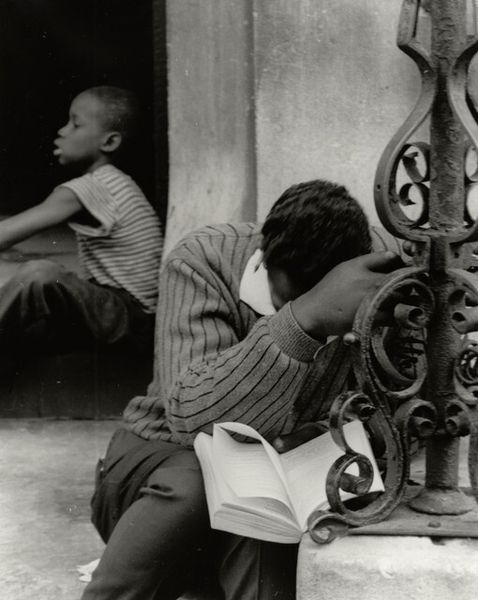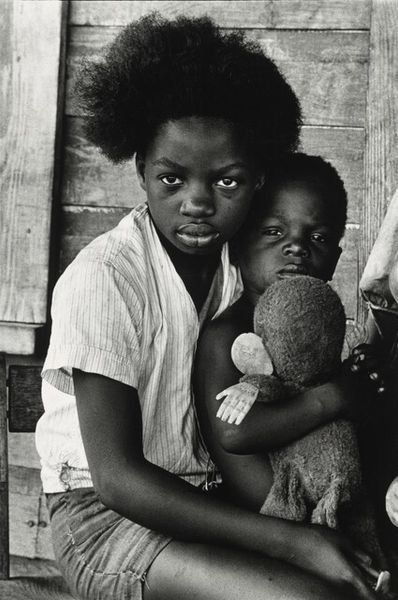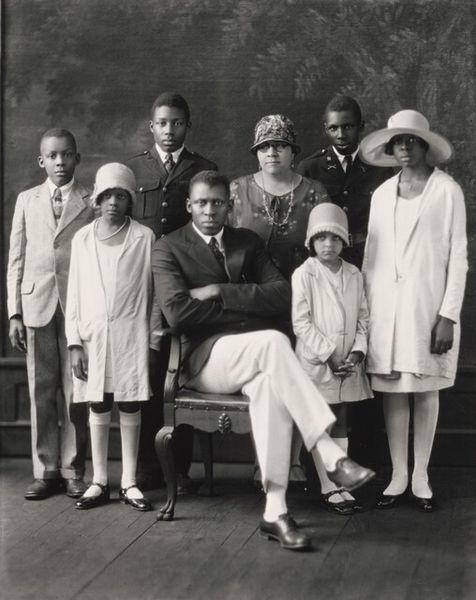
photography, gelatin-silver-print
#
portrait
#
black and white photography
#
black and white format
#
archive photography
#
street-photography
#
photography
#
historical photography
#
black and white
#
gelatin-silver-print
#
monochrome photography
#
ashcan-school
#
modernism
#
realism
Dimensions: image/sheet: 24.1 × 16.9 cm (9 1/2 × 6 5/8 in.)
Copyright: National Gallery of Art: CC0 1.0
Curator: This compelling gelatin silver print is titled "Father and Son, Penn Station, New York City," created in 1948 by Ruth Orkin. Editor: The somberness is striking, isn’t it? The way the light falls, it casts the father and child in this pool of quiet amidst a sea of blurry movement. The textures—the coarse tweed of the suit, the soft skin of the child—it’s all meticulously rendered. Curator: The Ashcan School influence is really evident here, wouldn't you agree? Orkin is capturing a very real moment of working class, urban life in mid-century New York. The image speaks volumes about the experience of black Americans traveling during this period, especially through segregated spaces. Penn Station, although a public place, held different meanings and experiences depending on one’s race. Editor: I’m drawn to the geometric rigor underpinning the image. The grid of the floor tiles, the rectangular suitcase functioning as a seat, the triangular composition created by the father’s form leaning slightly forward to secure his child—it’s a series of interlocking shapes. Even the man's hat creates a strong graphic line. Curator: And look at the gaze of the child directly at the camera. There is this mixture of vulnerability and resilience that encapsulates the complexities of identity and representation. The photograph serves as both a portrait of familial tenderness, but also as an implicit critique of societal inequalities. Editor: Absolutely. The monochrome enhances the visual contrasts but I also feel that this particular perspective forces the viewer to look not merely at the narrative, but consider this photograph's interplay between shadow and light. And through that relationship, Orkin masterfully creates depth of form, bringing tactility into play. Curator: Exactly! What began as this tender photo, becomes an impactful artifact within this visual rhetoric of societal context. Editor: An image built with intersecting lines, shapes, light, and ultimately depth, also offers the silent language that history wants to hide.
Comments
No comments
Be the first to comment and join the conversation on the ultimate creative platform.
